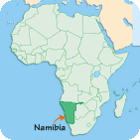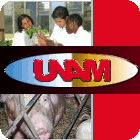Plant breeding programs in Namibia
 Lying along the south-western coast of Africa, Namibia is characterized as sub Saharan Africa’s driest country because about 90% of its area consists of desert. The persistent and recurring droughts as well as the poor soil fertility result in low crop productivity. Notwithstanding, about 70% of the population in Namibia is directly dependent on agricultural activities for their livelihoods and sustenance. Pear millet, sorghum, cowpea and groundnut are the most important staple crops.
Lying along the south-western coast of Africa, Namibia is characterized as sub Saharan Africa’s driest country because about 90% of its area consists of desert. The persistent and recurring droughts as well as the poor soil fertility result in low crop productivity. Notwithstanding, about 70% of the population in Namibia is directly dependent on agricultural activities for their livelihoods and sustenance. Pear millet, sorghum, cowpea and groundnut are the most important staple crops.
Crop research activities began only in 1990 in Namibia. Today, only three institutions are involved in plant breeding and/or plant biotechnology issues. All of them are public. Only the DART has an active programme and has released some successful crop varieties. The two Departments within the University of Namibia have recently embarked on agricultural research work and most of their work is rather confined to thesis and practical academic work mostly at the laboratory level.
Namibia’s plant breeding programme has targeted its resource efforts by addressing mostly biotic and biotic stresses. Pearl millet, as the most important of Namibia’s staple crops, generally enjoys high priority in the breeding programme.
All these institutions have one limiting factor in common -- the inadequate numbers of breeders for each crop while the two Departments listed also lack financial resources to carry out field and laboratory experiments. Namibia should urgently invest in human capacity to enhance the level of its breeders.
Research and education institutes with activities in plant breeding
 |
Directorate of Agricultural Research and Training (DART)
|
 |
Departemtn of Crop Science, Faculty of Agriculture and Natural Resources (University of Namibia)
|
 |
Departmetn of Biology, Faculty of Science (University of Namibia)
|
______________________________________
Information by Sheehamandje Ipinge (2007) - Information based on the Namibia's full report from the PBBC survey. Last revised 15-03-2010, GIPB
